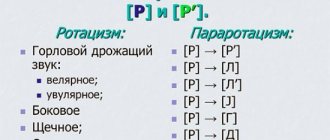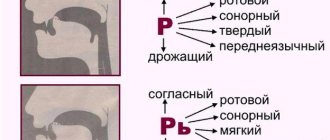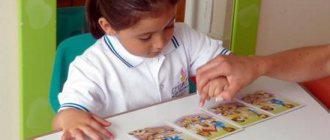Bradylalia manifests itself as a slower rate of speech.
The opposite diagnosis (too fast rate of speech) is tachylalia. With intact articulation and grammatical construction of phrases, words are pronounced more slowly than in the average case, and long pauses appear between them. Bradylalia manifests itself at any age, occurring in both childhood and adulthood. In mild cases, this syndrome is not noticeable to the speaker, but can interfere with communication. Interlocutors are not always comfortable communicating with someone who may exhibit bradyllia even to a slight degree.
Why does bradyllia occur?
Manifestations of a slow speech rate are explained by the prevalence of inhibition processes in the work of the higher nervous system and brain over excitation processes. The examination reveals lesions in the cerebellum and parts of the brain. Among the factors causing the formation of bradyllalia are:
- genetic (the tendency to slow speech is inherited);
- exogenous (intoxication, hypoxia in children during gestation and infancy);
- pedagogical (improper upbringing, the child’s tendency to imitate someone with such a speech feature).
Bradylalia can occur as an independent syndrome or as a concomitant manifestation characteristic of a disease. That is why it is important to conduct a thorough examination of the child in order to correctly determine the causes of such manifestations and take the necessary measures.
Causes of bradylalia
The causes of the disease include heredity, Rh conflict, traumatic brain and birth injuries, intoxication of the body in the womb or infancy.
In relation to children, the above deviations are often attributed to the child’s temperament and character, thereby missing the development of the disease.
At the same time, memory functioning and attention development suffer. Noticeably inhibited thinking, difficulty concentrating and changing activities. The danger of bradyllalia is that the disease can be complicated by stuttering over time.
There can be several serious reasons for the manifestation of bradyllalia:
- Predisposition to the disease at the genetic level.
- Damage to the fetus at the embryonic level of development.
- Received head trauma at an early age.
- Poorly developed cerebellum.
- The presence of more serious diseases directly related to the brain.
Smaller causes that accumulate over the years at an early age may also play a role. With such an illness, the child tends to be calm and lacks the activity characteristic of children.
Although there can be many reasons for this speech impediment, the main factors causing slowness are considered to be the following:
- heredity;
- traumatic brain injuries;
- frequent or persistent depression;
- Parkinson's disease;
- diseases of the central nervous system;
- more serious diseases - oligophrenia, meningitis, encephalitis.
Speech is also impaired as a result of general inhibition of the intellectual functions of the body.
If there are already adults in the family with such problems, then the child, as a rule, copies the pace of conversation of the parents and subsequently bradyllia is diagnosed in the child.
How does bradyllia manifest? Symptoms
This syndrome can be expressed not only in speech manifestations, but also in motor ones.
Speech manifestations:
- A slowdown in the overall rate of speech, with damage not only to external speech, but also to internal speech.
- Significant decrease in reading and writing speed.
- Characteristic extended pronunciation of individual sounds.
- The presence of long pauses between words in sentences and phrases.
- Speech is characterized by monotony and little emotionality.
Motor manifestations:
- Movements are also slow and sluggish.
- Facial manifestations are reduced.
- Poorly developed general motor skills and coordination.
- Fine motor skills are also low.
As for children, parents notice the child’s low activity. He prefers to sit rather than run and jump. Such children are not very similar to “active researchers,” which is typical for an early age. You shouldn’t attribute everything to innate temperament and character traits. It is quite possible that the child belongs to the “contemplative” type, however, if, in addition to a phlegmatic character and reduced temperament, parents notice other manifestations described above, they should consult a specialist.
In adults, bradyllia sometimes occurs after a stroke.
How to recognize bradyllalia
With bradyllalia, both external and internal speech are inhibited. The problem manifests itself in reading and writing: these processes also slow down. The voice sounds monotonous and emotionless. Some sounds are pronounced deliberately. In this case, articulation becomes unclear, but sound pronunciation and correct sentence construction are preserved. The child just pronounces words more slowly and takes long pauses between them. If you have bradylalia, you should also pay attention to motor symptoms:
- motor activity is reduced, lethargy is observed;
- facial expressions are poor and inexpressive;
- there are problems with coordination;
- underdevelopment of fine motor skills.
Parents note that the child’s behavior is atypical for the age norm. He prefers to sit and play quiet games. It is difficult for children with bradylia to frolic and conduct active research activities. Of course, this behavior can be explained by the child’s calm disposition. However, if you have the symptoms mentioned above, to exclude pathology, you need to consult a neurologist and speech therapist.
Why do you need to correct and treat bradyllia?
Problems with communication can lead to psychological trauma in a child. Low activity and slow speech may interfere with his ability to communicate. As a result, the child may begin to feel shy, become withdrawn, and eventually speak less and less.
However, in this case it is not only a matter of communications, but also development. Low speech activity also reduces the formation of intelligence. This means that the growth of psychological functions - attention, memory, thinking - also suffers.
Developed speech according to age is necessary for mental development. It is for this reason that it is important to start working with a speech therapist as early as possible so that the child can develop and learn.
Why does bradyllia need correction?
Without correction, bradyphrasia can develop into stuttering. And this is already a problem of a convulsive nature. Although initially with bradylalia we are talking about a tempo-rhythmic pathology of a non-convulsive nature.
Slow speech in childhood can cause serious psychological problems. It is difficult for a child to communicate with peers and make acquaintances. Over time, there is a high probability that the baby will become shy, withdrawn and even less talkative.
Underdevelopment of communication skills affects intellectual abilities. Accordingly, attention, memory, and thinking suffer, which is bad for the educational process. It will be difficult for the child to study.
To prevent these problems, you should promptly seek help from our NeuroSpectrum Center for Pediatric Speech Neurology and Rehabilitation. It is necessary to consult a specialist if a child has speech development delay (SSD) or general speech underdevelopment (GSD). Our Center’s specialists have been helping for many years with the correction of bradyllalia and other disorders of oral and written speech.
Diagnosis of bradyllalia
In order to determine the presence of a problem, special research is not required. The picture, as they say, is obvious. Slow speech is immediately noticeable. But due to the fact that bradyllia may be a consequence of any internal disorders, it is still recommended that the child be examined by a neurologist, speech therapist and psychologist. Sometimes, if an organic cause of the disorder is suspected, it may be necessary to do an MRI, EEG or REG of the brain.
Diagnosis of external speech is carried out by a speech therapist. He analyzes the state of the articulatory apparatus, notes the correctness of sound pronunciation, the rhythmic side of speech, and the intonation component.
In addition, the child’s level of development of fine motor skills, facial expressions, and intellectual development is also checked.
Advantages of correction of speech disorders in NEARMEDIC
High level of services provided
The quality of services provided by our specialists is eloquently evidenced by the fact that in the rating of private clinics for 2021, the NEARMEDIC network took first place, confidently ahead of other representatives of the industry.
Experienced staff
Classes for bradyllalia are conducted by speech therapists with higher education in defectology, aphasiologists-neurorehabilitation specialists with 18 years of experience, practical psychologists, and neurologists. Among the doctors are teachers from the Institute of Defectology and Medical Psychology, developers of individual development and rehabilitation programs, participants in international and domestic conferences, congresses and symposia.
How to fix bradyllalia?
Correction of bradyllalia, like many other speech disorders, must be carried out comprehensively.
- Medical methods include the use of medications designed to stimulate the nervous system. These include strengthening and tonic agents prescribed by the doctor.
- Physical exercises aimed at improving coordination of movements, creative activities that stimulate fine motor skills, dancing, and singing will also be of great benefit.
- Physiotherapeutic treatment and, if necessary, massage courses are also prescribed.
- We are working with a psychologist.
Bradylalia, bradyphrasia (slow speech rate)
That is why special corrective work to overcome bradyllalia is carried out against the background of medical intervention aimed at normalizing the activity of the nervous system. The treatment complex should include massage courses, sensory integration classes, and necessarily Neuropsychological correction, which is designed to correct the root of the problem - the brain processes underlying bradyllalia.
Neuropsychological correction drug-free today , which means it has no side effects. With a competent professional approach, the most effective, because it is based on training the Brain and its certain zones!!!
The correction program is developed individually for each child based on classical neuropsychological methods using elements of body-oriented therapy, as well as the most effective techniques borrowed from related disciplines (defectology, speech therapy, sensory integration, exercise therapy, art therapy).
At Neurologopedic the following is integrated into the classical neuropsychological correction program:
— more than 18,000 educational and educational games;
— more than 20 educational simulators;
— more than 30 types of innovative equipment;
The neuropsychological correction program is built strictly on the basis of the individual characteristics of each child, the goals and objectives of the correction, and is prescribed by a specialist strictly individually for each child on the basis of neuropsychological diagnostics and hardware examination with instruments.
The neuropsychological correction program includes a motor (psychomotor) part, a cognitive part (tasks at the table or on the carpet for the development of memory, speech, thinking, writing, reading, etc.), as well as a block that includes work with Innovative Equipment or Special Programs .
Neuropsychological correction allows a child to overcome bradylia and communication difficulties without medication
Neuropsychological correction has a therapeutic effect on the body - it improves the emotional and physical state, increases self-esteem and self-confidence, reveals internal reserves and abilities, and develops additional hidden capabilities of the brain.
But parents must realize that correction is not a magic quick pill or a magic wand. This option is usually promised by charlatans, scammers and dishonest “experts” from psychology.
Our neuropsychologists guarantee results and a 100% solution to problems only for those who understand that neuropsychological correction is a large multi-level systemic work under the guidance of a competent specialist in the center and regular exercises at home. In addition to the neuropsychologist, who conducts classes with each child INDIVIDUALLY, throughout the correction process, he is accompanied by a methodologist who constantly adjusts the program, conducts intermediate diagnostics and monitors even the slightest changes.
Speech therapy correction of bradyllalia
In a comprehensive approach to correcting this speech disorder, the speech therapist plays the “main violin”. Work to correct bradyllalia should stimulate the speed of the child’s internal and external speech using special exercises:
- To speed up and increase the clarity of spoken phrases (tongue twisters and pure twisters are used with a gradual increase in tempo).
- To improve and speed up the work of inner speech (tasks on imagination, memory, intelligence).
- To increase the speed of reading and writing in schoolchildren.
- To develop expressiveness and emotionality of speech (oratory and stage speech).
In his work, the speech therapist suggests that the child speak at a certain speed - with a metronome or simply maintaining the tempo by clapping his hands. Thus, the ability to speak faster and control oneself is gradually developed.
Didactic and speech therapy games and exercises stimulate the speed of the internal work of thought, helping the child learn to act faster and more actively. Correction requires regular classes, but if the problem is not ignored, it can be dealt with, providing the child with the opportunity to successfully study and communicate with friends.
Date of publication: 07/07/2016. Last modified: 05/09/2018.
Forecast and preventive methods of bradyllia
In general, the prognosis for treatment of speech tempo disorders is favorable, especially if correction of bradyllalia is carried out in the early stages. But still, after speech normalization, the patient needs not only to visit a specialist more often, but also to independently monitor his speech. As for preventive methods of bradyllalia, in this case doctors recommend:
- prevent intrauterine, birth and postpartum lesions of the central nervous system;
- avoid head injuries, neuroinfections;
- carry out measures aimed at preventing the development of asthenic syndrome, namely, follow a daily routine and eat well;
- monitor the child’s speech development;
- fully communicate;
- choose the right role models.
Speech therapy work for bradyllalia
All methods of speech therapy correction of this disorder are used to develop faster speech movements and to accelerate the tempo of internal speech.
If bradyllia is severe enough, it is first necessary to normalize the coordination and rhythm of general movements. Trains faster switching of attention, reproduction of various rhythms with gradual acceleration.
Working with speech material (specially selected syllables, words, phrases, texts) also gradually becomes more complicated, and the pace of the exercises gradually accelerates. They use pronunciation, reading under a metronome, to a rhythm beaten by hand. Theatrical activities are used.
Logorhythmics classes are very effective. Exercises are performed to rhythmic, energetic music.
Usually, after a year of work, speech can become closer to normal, but after a course of classes, control over the rate of speech is necessary.
That's all I wanted to tell you about such a speech tempo disorder as bradyllia. If you have any questions about this topic, write in the comments. If you found this information useful, please share it with your friends.
Tips for parents
It is important for the child to create a positive speech environment.
Repeatedly talk through ordinary, daily activities:
dressing, washing, eating, bathing, walking, getting ready for bed, going to bed, cleaning the room and toys, cooking. All these processes must necessarily be accompanied by the speech of adults.
Say nursery rhymes, tongue twisters, proverbs, proverbs, sing songs
.
Talk to your child as often as possible
, listen carefully to his answers to questions. This will not only improve your baby’s speech, but will also establish a trusting relationship between you.
Read together
, discuss what you read, illustrate the plot together, discuss the drawings.
Prevention
To prevent the development of the disorder in children, parents need to be attentive to preparing for pregnancy and childbirth - get examined, take tests and attend classes for expectant mothers and fathers. In addition, they should adhere to a healthy lifestyle: eat well, give up bad habits and exercise regularly.
Prevention of relapse is based on periodic visits to a speech therapist and completion of maintenance courses of speech therapy exercises. Such preventive sessions are recommended to be carried out at least once every 1-2 years.
Bradylalia is characterized by speech with a tendency to slow down, low emotionality and monotony of the voice. The disease also manifests itself in slow thinking, reading and writing. The pathology can be caused by brain damage both during intrauterine development and after the birth of the child. Timely sessions with a speech therapist and complex therapy can help you cope with bradylia and completely eliminate its symptoms.
Forecast
With early detection of the disease and complex therapy, the prognosis is favorable. Using modern methods of correcting speech disorders, patients manage to achieve normal pronunciation and settle into society. After the positive effect of treatment, do not forget about regular maintenance courses and visits to a speech therapist, periodically be examined by your attending physicians and monitor your speech.
If a speech defect is detected late, it is difficult to cope with bradyllalia. However, a positive effect is achieved as a result of long-term training with specialists and the use of medications.
Corrective work for bradyllalia.
Correcting bradyllalia requires complex work.
Medical correction of this disorder is aimed at increasing the activity of nervous activity and normalizing the speed of mental processes; it is tonic in nature. Psychotherapeutic influence is also used to change the attitude towards one’s own speech.
When working with adults, auto-training is used. Physical education classes, which contain toning exercises for various parts of the body and can be combined with exercises for the voice and breathing, are also very useful.









